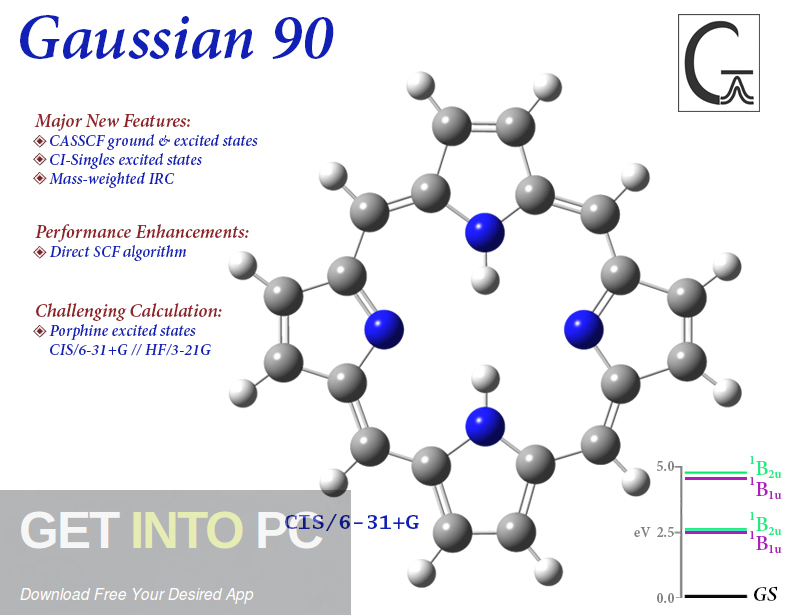

Optimizing the geometry of a given excited state requires the prior calculation of the vertical excitations whether via a multireference method, quantum Monte Carlo, or the Time Dependent Density Functional Theory, TD-DFT, which due to its lower computational cost is the most widespread method. But for some instances, say calculating not only the absorption spectra but also the emission, it is important to know what the geometry minimum of this final state looks like, or if it even exists at all (Figure 1). You may then use that guess as the starting point for other calculations such as my failed Counterpoise one.Įlectronic excitations are calculated vertically according to the Frank-Condon principle, this means that the geometry does not change upon the excitation and we merely calculate the energy required to reach the next electronic state. The only keyword tells gaussian to only calculate the guess wave function and then exit the program. This way, the second fragment will have the opposite spin (but the same multiplicity) as the first fragment.

By using this negative sign we’re not requesting a negative multiplicity, but a given multiplicity of opposite spin to the other fragment.


You may then use the guess as the starting point of other calculations since it will be stored in the checkpoint file. The solution to this problem is as simple as it may be obscure: Create a convenient guess wavefunction by placing a negative sign to the multiplicity of one of the fragments in the following example. But if the guess (the initial trial wavefunction from which the SCF will begin) has a problem understanding this then the title error shows up: Bad data into FinFrg So for this hypothetical example we have two anions (but could easily be two cations) each with an unpaired electron, yielding a complex of charge = -2 and a singlet multiplicity which implies those two unpaired electrons have opposite spin. In which the first pair of charge-multiplicity numbers correspond to the whole molecule and the following to those of each fragment in increasing order of N (in this case, N = 2). The core of the problem is related to the guess construction normally a Counterpoise calculation would look like the following example: #p B3LYP/6-31G( d, p) counterpoise=2 The problem came when trying to calculate the Basis Set Superposition Error (BSSE) because in the Counterpoise method you need to assign a charge and multiplicity to each fragment, however it’s not obvious how to assign opposite spins. So, two radicals interact at a certain distance and the full system is deemed as a singlet, therefore the unpaired electron on each fragment have opposite spins. I found this error in the calculation of two interacting fragments, both with unpaired electrons.


 0 kommentar(er)
0 kommentar(er)
